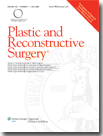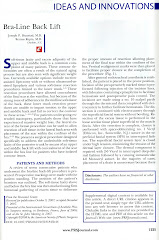One of the most common body contouring requests involves the thighs. Women, and sometimes men, of all ages have variable complaints about the appearance of their thighs. Problem areas may be the inner thighs, the outer thighs, front part of the thighs, and of course the back part of the thighs. Although patients often complain more about one section of the thighs as listed above it is the entire upper leg or thigh area that needs improvement. The problem or issue that requires improvement usually falls into one or both of the following categories:
1) Excess fat
2) Excess laxity
Excess fat
Excess fat in the thighs can present as an overall size issue “my thighs are too big” or as a shape issue “I hate the bulge of fat on the outer thighs, or my inner thighs touch”. Excess fat is one of the easier problems to fix. There are various forms of fat removal available including that fall into various categories including non-invasive, invasive, immediate improvement, delayed improvement, etc. Most patients who have appreciable amounts of excess fat and want the best possible result will be good candidates for the more direct and definitive fat removal technologies involving liposuction such as power assisted liposuction, ultrasound assisted liposuction, traditional liposuction, etc. Patients who simply have excess fat without excess laxity and good skin will be served well by reduction of this excess fat through such liposuction technologies. These can be performed under local or general anesthesia and usually involve one or more small, 2-3 mm, access incisions. Patients who have only an excess fat issue tend to be between 20-40 years old and usually have not had significant fluctuations in their weight.
Excess laxity
Excess soft-tissue laxity of the thighs is a very frequent complaint from patients. Excess laxity is usually seen in the slightly older patient population, perhaps 30-onward, but can also be seen in patients who have had significant weight fluctuation or weight loss. To date, there does not exist any technology that can significantly reduce, on a long term time frame, excess soft-tissue laxity via a non-invasive modality. To put it another way, significant improvement in soft-tissue laxity requires an direct removal of the excess tissue laxity and therefore requires an incision and by definition some form of scar. Excess laxity of the thighs can be treated by various forms of lifts as described below:
1) Back of the thigh: the back of the thighs or “posterior” thighs can be lifted and tightened by performing a buttock lift. By repositioning and tightening the buttock the posterior thigh is also lifted and tightened. The final incision is in the bikini line at the junction between the buttock and lower back. This incision can be well hidden and heals very well if performed properly. This procedure usually creates substantial improvement in the shape, position, and contour of both the buttock and thighs. It can also be combined with liposuction and fat grafting of the buttock to achieve maximum improvement in the appearance of the buttocks area.
2) Inner thigh: The inner thighs can be treated for excess laxity in one of two ways. Significant laxity the whole length of the inner thigh also involving components of the anterior and lateral thighs is best treated with a length-wise or vertical thigh lift. This requires removal of excess soft tissue laxity the entire length of the inner thigh and results in a subsequent vertical inner thigh incision that is as long as needed to maximize the results. This can potentially span the entire length of the inner thigh from groin to the knee area. Although the scar is long, the reduction of laxity is significant and the results are usually the longest lasting. Massive weight loss patients are usually good candidates for this procedure. Patients with small amounts of laxity, particularly near the groin area, can be treated with a crescent inner thigh lift where the final incision is located at the crease between the thigh and groin area. This procedure has a more concealable scar but its ability to remove tissue laxity is much less than the vertical thigh lift procedure. Care needs to be taken to not place undue tension on the closure as lowering of the scar can bee seen and spreading of the outer labia can occur.
3) Body lift: The body lift procedure involves a tummy tuck, lateral (side) thigh lift, and buttock lift. It is designed to place the final incision in the bikini line and provide global improvement of the soft-tissue laxity of the outer thighs, posterior thighs via the buttock lift, and a portion of the front of the thighs. The inner thighs may require additional treatment for maximum correction as indicated in #2 above. This can be done at the same time or as a separate surgical proceure.
All the best,
Phoenix/Scottsdale








1 comment :
Hey there! Thanks for sharing this. A toned, flat tummy is a goal many of us and so I tried a lot of ways on how to have a nice tummy. Initially I tried some drugs but it didn't worked for me. Only a tummy tuck did. And I loved the result!
Tummy Tuck Philippines
Post a Comment